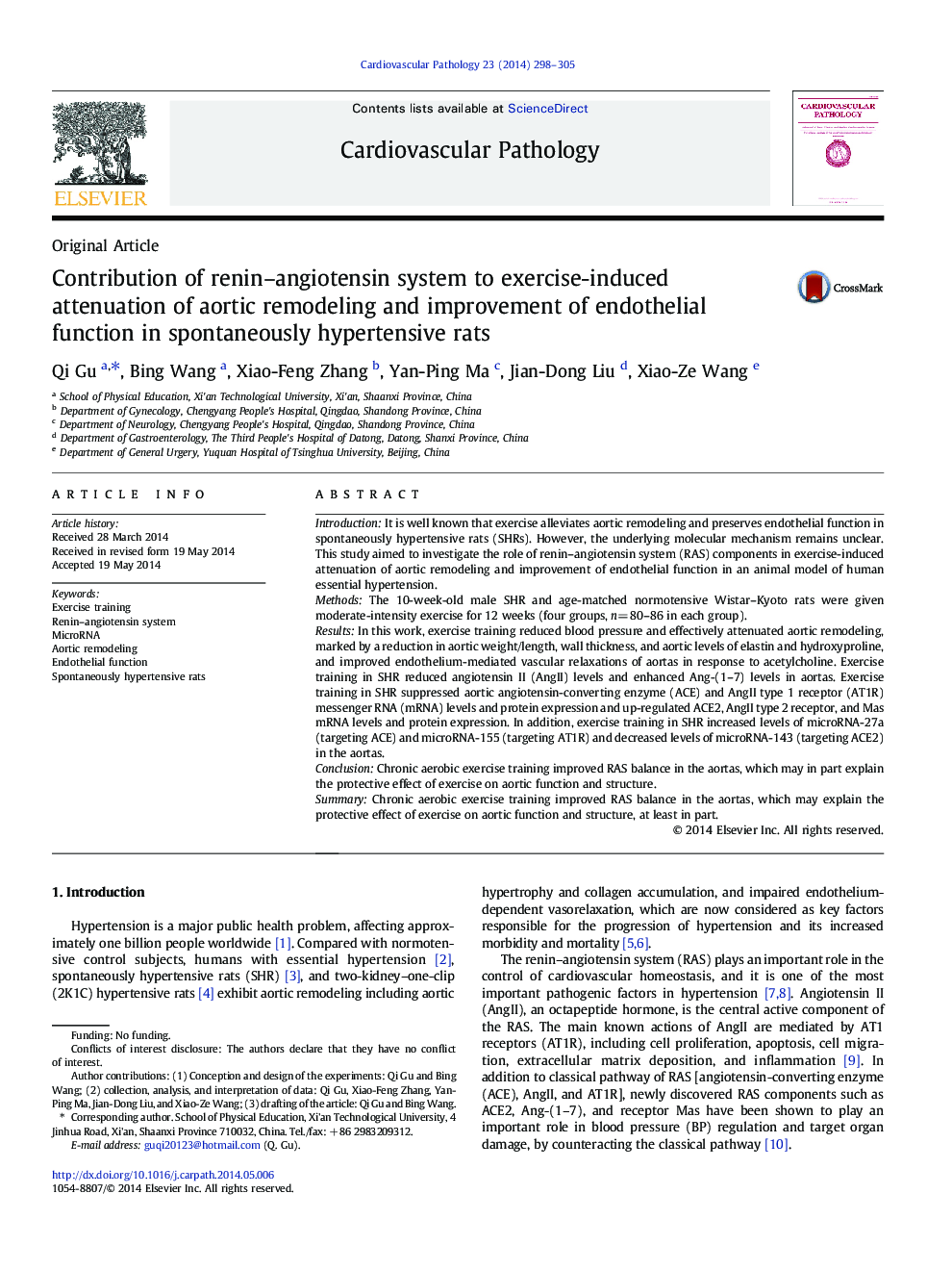| کد مقاله | کد نشریه | سال انتشار | مقاله انگلیسی | نسخه تمام متن |
|---|---|---|---|---|
| 2898737 | 1173096 | 2014 | 8 صفحه PDF | دانلود رایگان |

IntroductionIt is well known that exercise alleviates aortic remodeling and preserves endothelial function in spontaneously hypertensive rats (SHRs). However, the underlying molecular mechanism remains unclear. This study aimed to investigate the role of renin–angiotensin system (RAS) components in exercise-induced attenuation of aortic remodeling and improvement of endothelial function in an animal model of human essential hypertension.MethodsThe 10-week-old male SHR and age-matched normotensive Wistar–Kyoto rats were given moderate-intensity exercise for 12 weeks (four groups, n= 80–86 in each group).ResultsIn this work, exercise training reduced blood pressure and effectively attenuated aortic remodeling, marked by a reduction in aortic weight/length, wall thickness, and aortic levels of elastin and hydroxyproline, and improved endothelium-mediated vascular relaxations of aortas in response to acetylcholine. Exercise training in SHR reduced angiotensin II (AngII) levels and enhanced Ang-(1–7) levels in aortas. Exercise training in SHR suppressed aortic angiotensin-converting enzyme (ACE) and AngII type 1 receptor (AT1R) messenger RNA (mRNA) levels and protein expression and up-regulated ACE2, AngII type 2 receptor, and Mas mRNA levels and protein expression. In addition, exercise training in SHR increased levels of microRNA-27a (targeting ACE) and microRNA-155 (targeting AT1R) and decreased levels of microRNA-143 (targeting ACE2) in the aortas.ConclusionChronic aerobic exercise training improved RAS balance in the aortas, which may in part explain the protective effect of exercise on aortic function and structure.SummaryChronic aerobic exercise training improved RAS balance in the aortas, which may explain the protective effect of exercise on aortic function and structure, at least in part.
Journal: Cardiovascular Pathology - Volume 23, Issue 5, September–October 2014, Pages 298–305